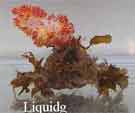Algae pests in reef aquariums.
South East Queensland Marine Aquarium and Ocean activities Forum :: SEQMAOAF :: Advice on all marine aquarium issues
Page 1 of 1
 Algae pests in reef aquariums.
Algae pests in reef aquariums.
Diatoms-golden brown to normal brown algae in the aquarium.
This is a diatom bloom and they can come and go for ages and are good for the aquariums eco system and in the ocean they are part of phytoplankton.
If you recently added sand for a bed or substrate?
If so you may have added some silica and diatoms feed on this. The brown algae, if it is diatoms, the husk, which is the brown algae in appearance is left over after their blooms, is a natural silica-crude silicon, it’s their left over shells in clusters that you see as algae, this is because they multiply A sexually.
They attach due to very little mobility and shed as they multiply, that is most likely the brown colouration in your aquarium.
To help reduce them, using RO water helps reduce inorganic nutrients that come from tap water, reduce the phosphate components of phosphorus and orthophosphate that comes from waste, left over foods and dead spots onto general nutrients that encourage their growth to a degree.
The main thing is water changes or just wait, but I wouldn’t change your lighting, that will affect other photosynthetic life.
I would do regular small water changes of say 15 percent of your aquarium and sumps water amount over all each week any way, this will help with far more then just algae blooms.
The water changes will also reduce the silica they are feeding on like water born silica already in the water and the silica that comes from microbe acidity as they oxidise the nitrogen cycle to nitrate and in the bed with the silica in it that they are most likely on and feeding upon the silica.
Give it time and other small tank inhabitants will eat them and a balance will form.
Hair algae.
This annoying photosynthetic life form is a product from the end results of your nitrogen cycle as with cyanobacteria.
Nitrate reduction resulting in nitrogen, oxidation resulting in inorganic orthophosphate and phosphorus.
You can reduce these irritants by purchasing phosphate reducers or incorporate caulerpa algae somewhere and hair algae is no longer a problem.
Caulerpa algae.
Never use any form of caulerpa in the display aquarium!
More on potential algae pests.
https://southeastqueenslandm.aforumfree.com/t1205-caulerpa-and-other-algae-found-near-brisbane-in-seq#4225
This is a diatom bloom and they can come and go for ages and are good for the aquariums eco system and in the ocean they are part of phytoplankton.
If you recently added sand for a bed or substrate?
If so you may have added some silica and diatoms feed on this. The brown algae, if it is diatoms, the husk, which is the brown algae in appearance is left over after their blooms, is a natural silica-crude silicon, it’s their left over shells in clusters that you see as algae, this is because they multiply A sexually.
They attach due to very little mobility and shed as they multiply, that is most likely the brown colouration in your aquarium.
To help reduce them, using RO water helps reduce inorganic nutrients that come from tap water, reduce the phosphate components of phosphorus and orthophosphate that comes from waste, left over foods and dead spots onto general nutrients that encourage their growth to a degree.
The main thing is water changes or just wait, but I wouldn’t change your lighting, that will affect other photosynthetic life.
I would do regular small water changes of say 15 percent of your aquarium and sumps water amount over all each week any way, this will help with far more then just algae blooms.
The water changes will also reduce the silica they are feeding on like water born silica already in the water and the silica that comes from microbe acidity as they oxidise the nitrogen cycle to nitrate and in the bed with the silica in it that they are most likely on and feeding upon the silica.
Give it time and other small tank inhabitants will eat them and a balance will form.
Hair algae.
This annoying photosynthetic life form is a product from the end results of your nitrogen cycle as with cyanobacteria.
Nitrate reduction resulting in nitrogen, oxidation resulting in inorganic orthophosphate and phosphorus.
You can reduce these irritants by purchasing phosphate reducers or incorporate caulerpa algae somewhere and hair algae is no longer a problem.
Caulerpa algae.
Never use any form of caulerpa in the display aquarium!
More on potential algae pests.
https://southeastqueenslandm.aforumfree.com/t1205-caulerpa-and-other-algae-found-near-brisbane-in-seq#4225
_________________
Forum Admin

liquidg- Posts : 2782
Join date : 2010-02-02
Location : Brisbane bayside
 Similar topics
Similar topics» Algae commonly found in marine reef aquariums.
» Macro algae suitable for use in display reef aquariums
» Pests-cyano,hair algae,mantis,white spot,velvet and more in the marine aquarium
» lighting for reef aquariums.
» Heater use for reef aquariums.
» Macro algae suitable for use in display reef aquariums
» Pests-cyano,hair algae,mantis,white spot,velvet and more in the marine aquarium
» lighting for reef aquariums.
» Heater use for reef aquariums.
South East Queensland Marine Aquarium and Ocean activities Forum :: SEQMAOAF :: Advice on all marine aquarium issues
Page 1 of 1
Permissions in this forum:
You cannot reply to topics in this forum
 Home
Home